Stops: Galle Face Hotel, Pettah Market, Number 11 (Days 61-64)
A couple of days before heading out to Sri Lanka I started reading “The Seven Moons of Maali Almeida” by Shehan Karunatilaka and finished it just as we flew into Bandaranaike International Airport outside Colombo. A taxi from the hotel was waiting to take us through the darkness into the city. That was the first thing I noticed–just how dark it was. No brightly lit billboards lining the airport road. No industrial estates nearby. We just drove through the dark.
Much of “The Seven Moons” takes place in the dark also–literally and figuratively. The protagonist Maali Almeida awakens in a weird airport arrivals hall of the afterlife. He was a photojournalist and a gambler. Somebody killed him, but who and how? Maali needs to find out while completing his final task of exposing the many atrocities he documented during the conflict between the Sri Lankan Army, the Liberation Tigers of Tamil Eelam, factions within the same LTTE, Special Task Force death squads, demons and spirits, just plain gangsters and crooks, the Indian Army, Israeli arms dealers, and American spies. It was a good background primer for events and people in Sri Lanka and especially in Colombo with places like Slave Island (or called Company Street, depending upon your perspective.)
On advice from a longtime, part-time resident of Sri Lanka, I booked us into the Galle Face Hotel for the first few nights–a “great colonial pile”–beautiful nineteenth century British hotel with deep verandas running the length of the building, dark old woodwork, and most importantly on the coast. There are newer hotels in high rises, but they are inland of the coast road. We could sit and eat breakfast or dinner and look out to sea. A bagpiper and other staff ceremonially lower the flag from it’s place on the seawall each evening. There is a veritable army of staff opening doors and calling out “sir” or “madame.” Kind of a tropical Downton Abbey theme park with cases of old monogrammed silver and Prince Phillip’s car on display.
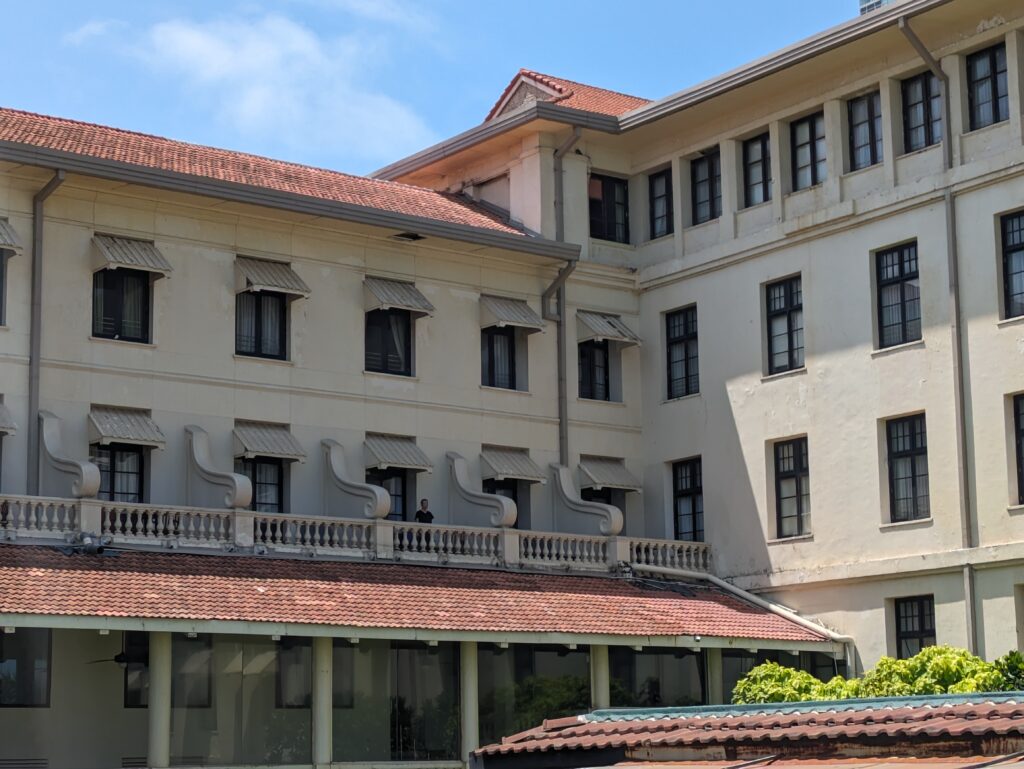
Etsuko on the balcony of our room.
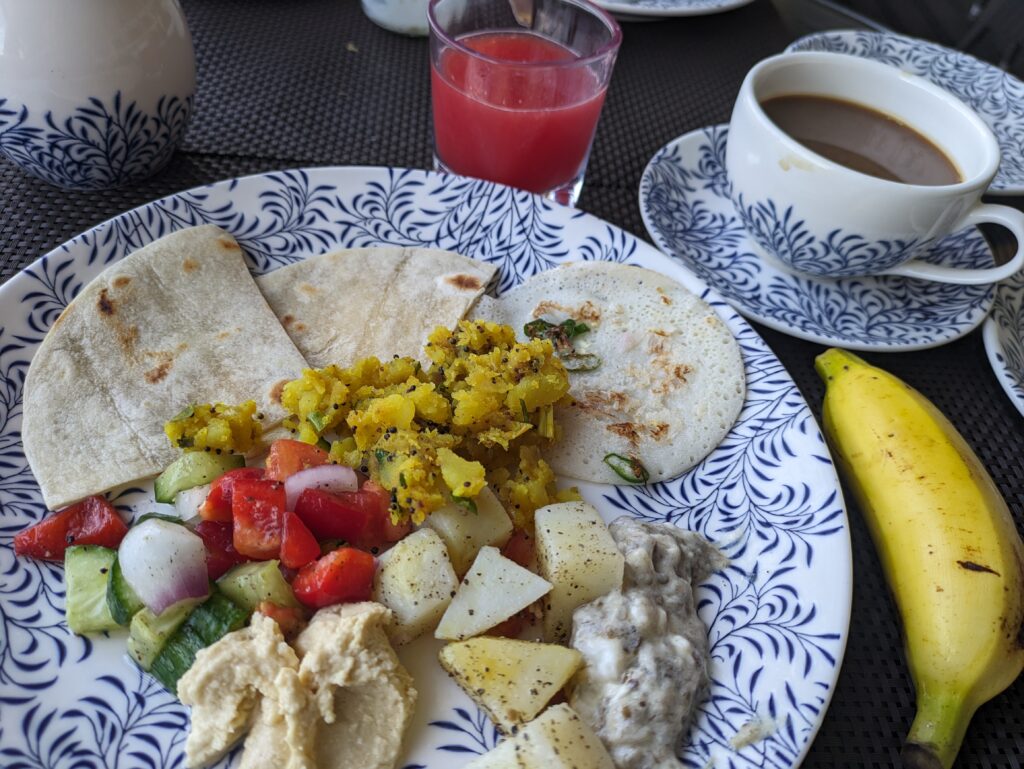
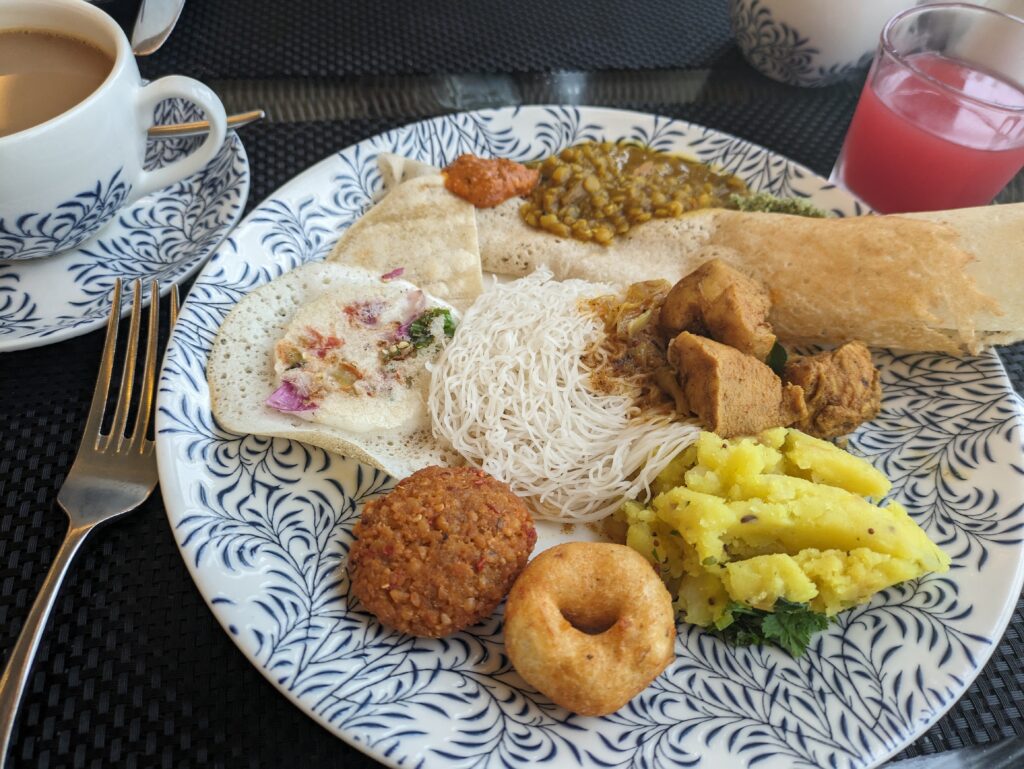
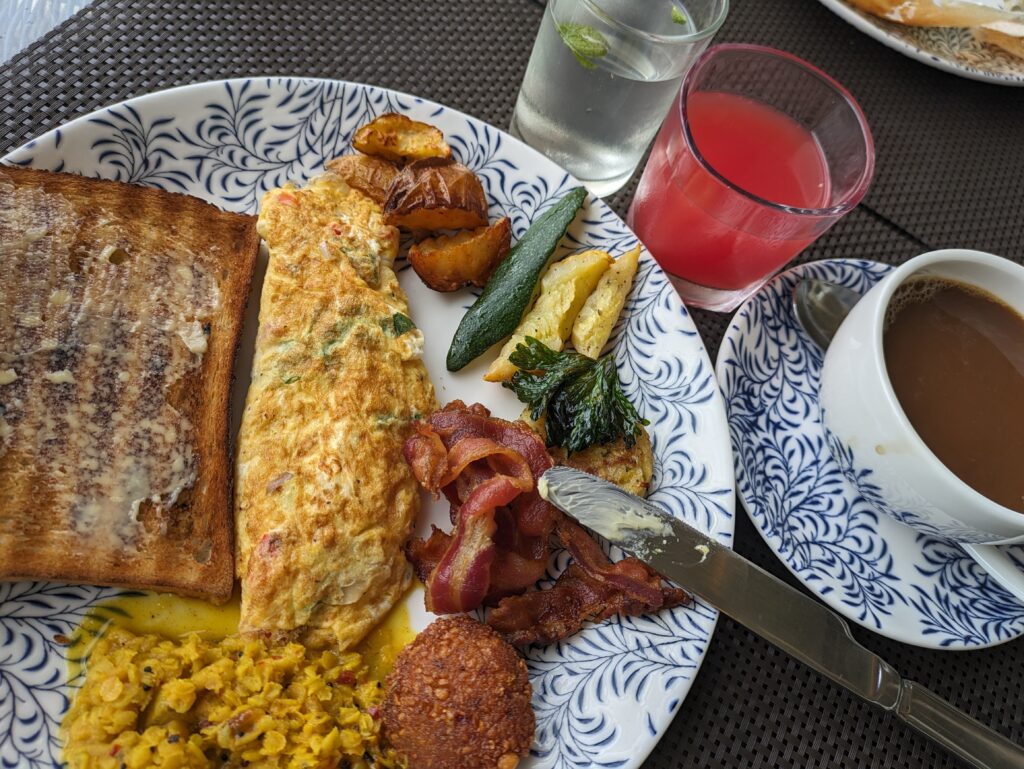
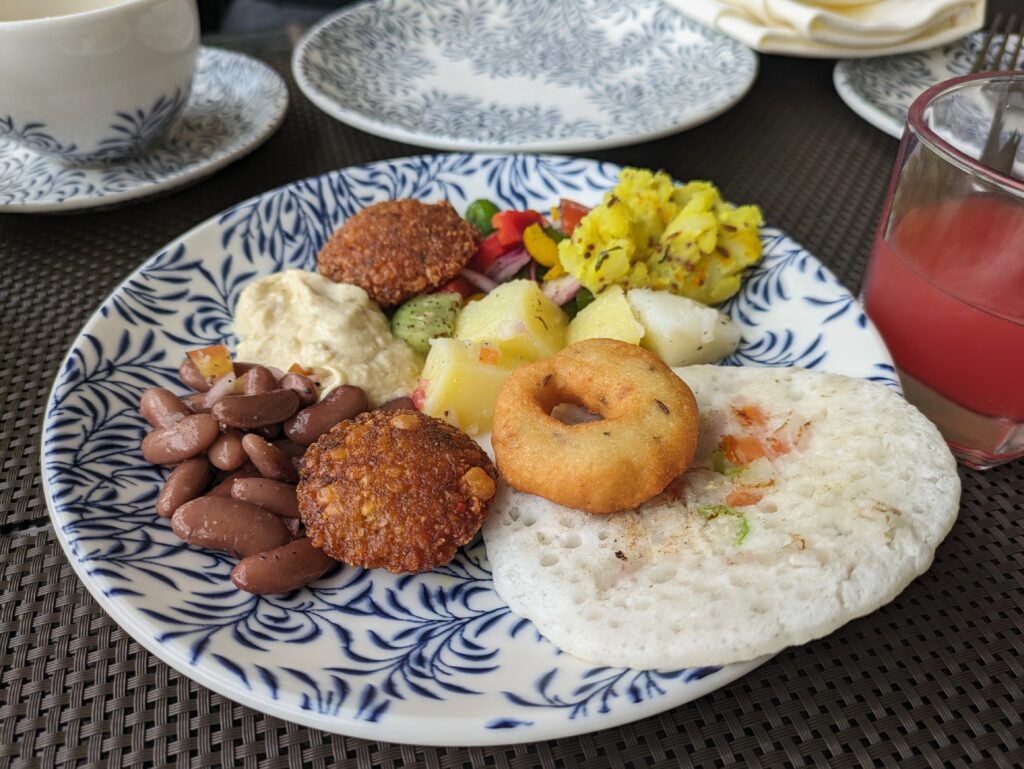
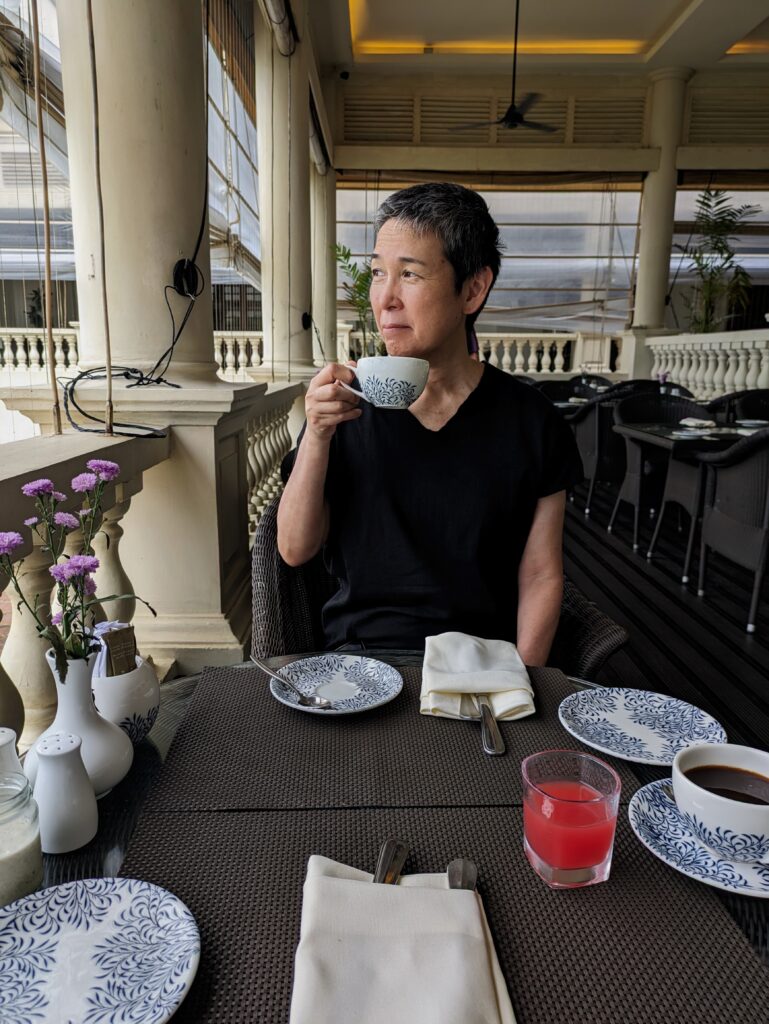
Brekkies.
The first day we did a bit of a wander around, especially through one local market, but it was tough. Not very pedestrian friendly and we were tired, so back to the hotel for a swim, a very nice ayurvedic massage, and a rest to get ready for the adventures to come.
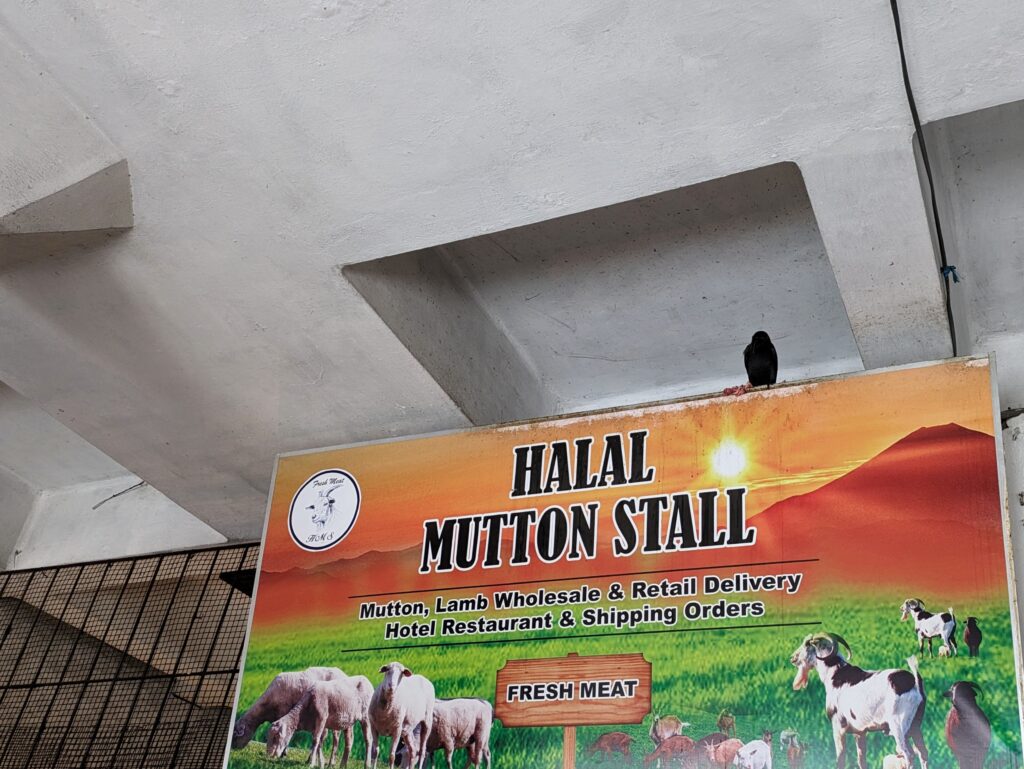
Crows really are everywhere. They rule Colombo with black talons.
Having learned our lesson, and looking at the very rainy weather forecast, we hired a tuk-tuk with guide for a tour the next day. He was really good and explained the city very well and we got a great view of so many places.
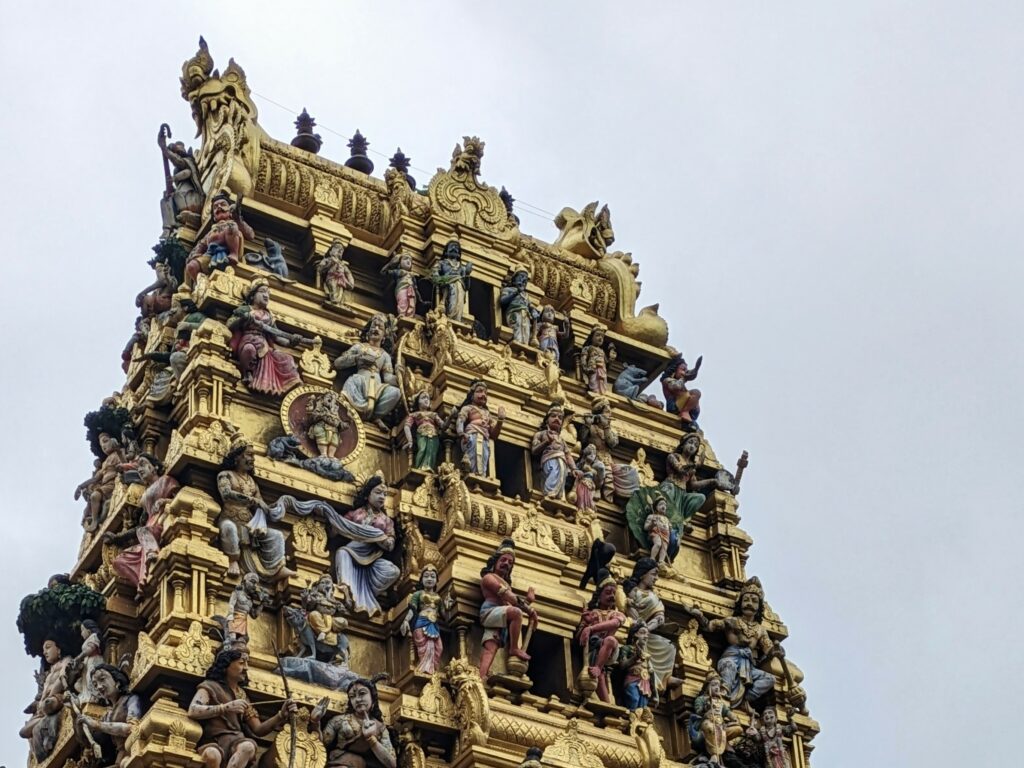
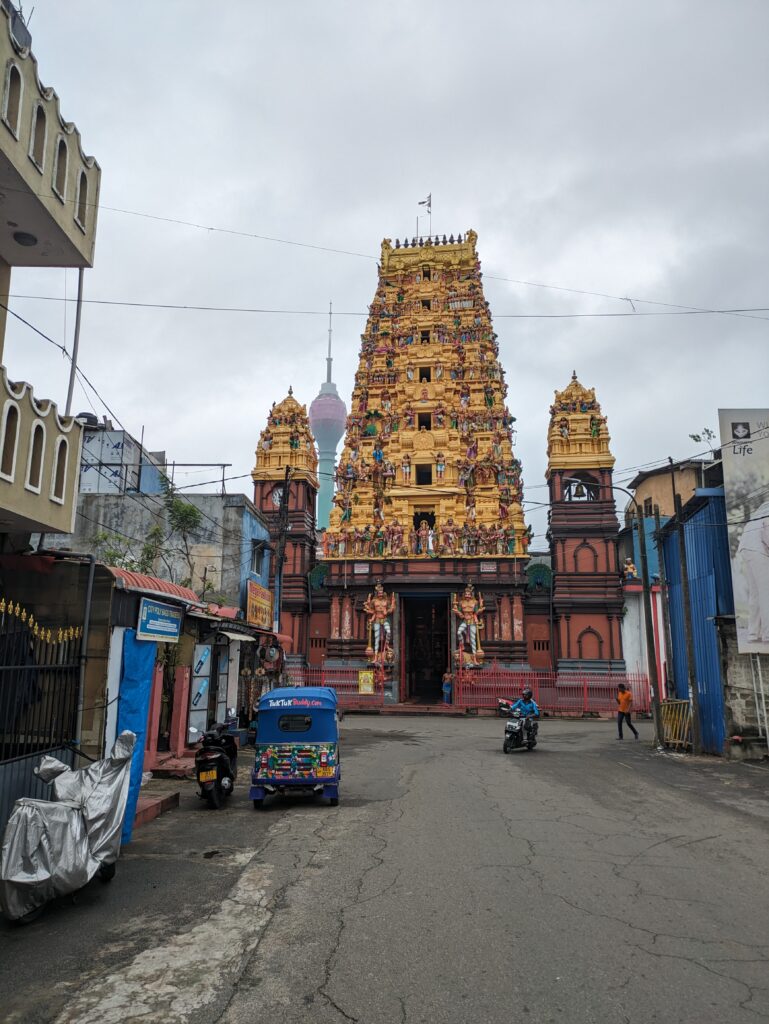
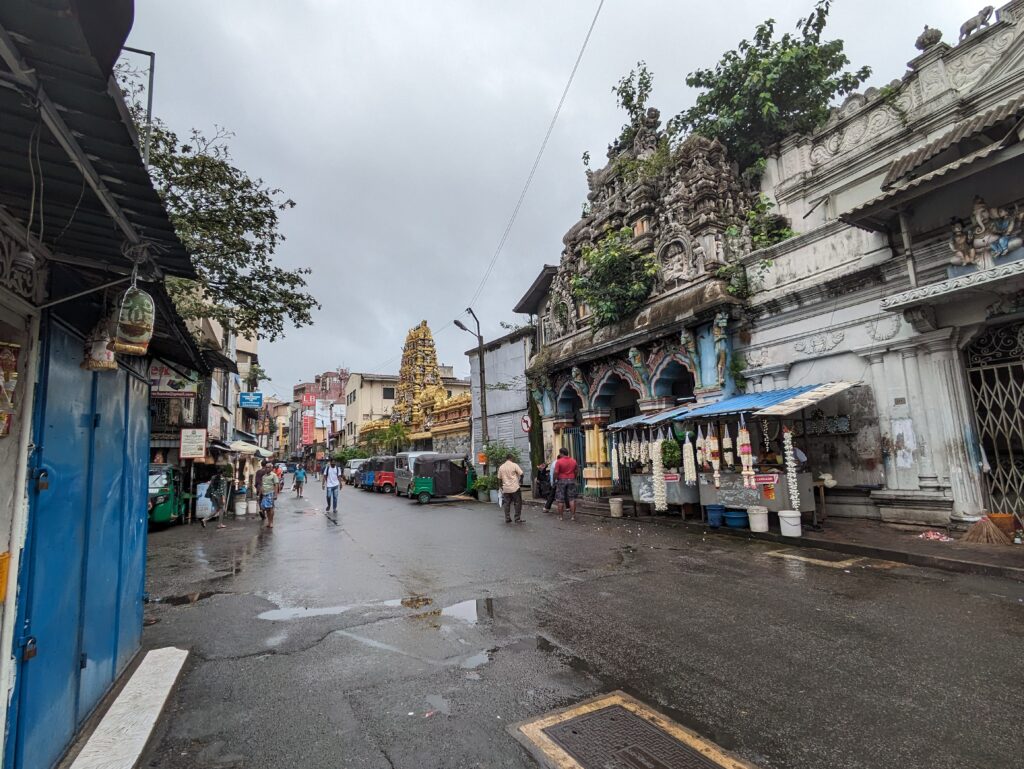
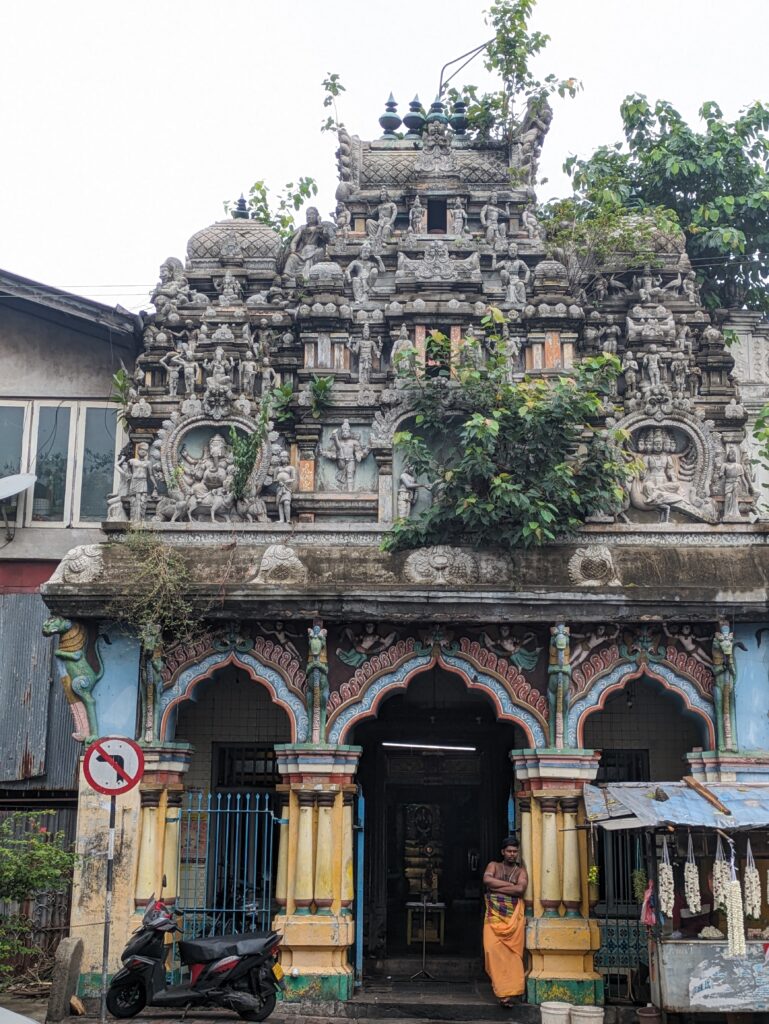
Hindu temples in Colombo.
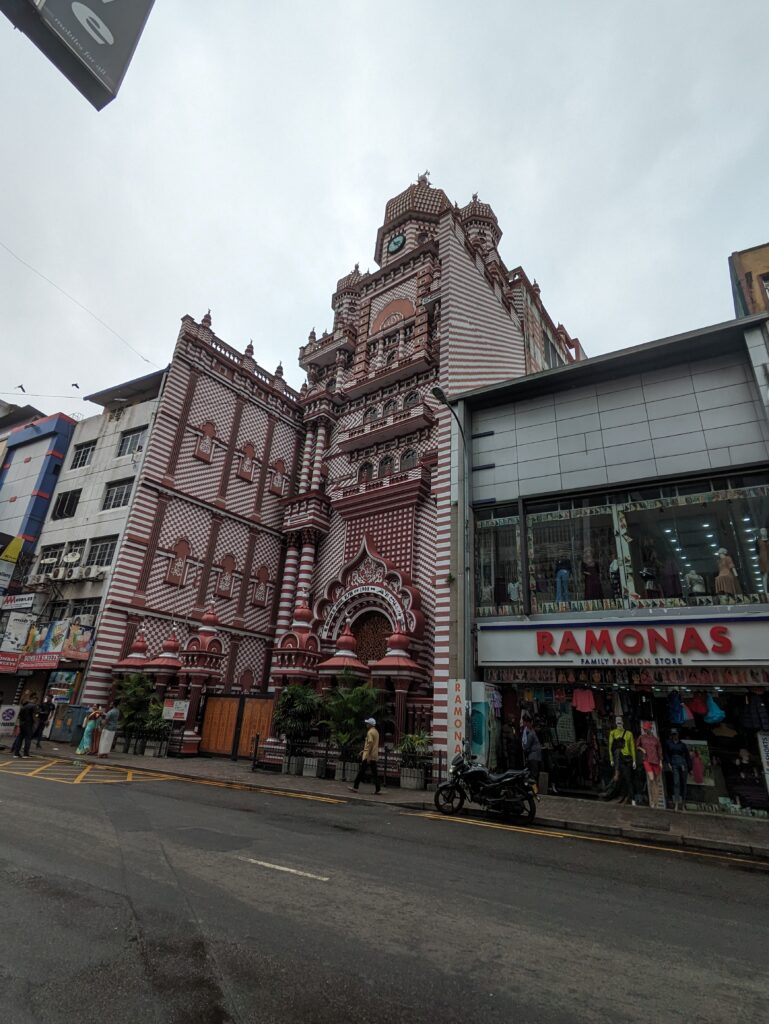
Jami Ul-Alfar Mosque–main mosque in Sri Lanka.
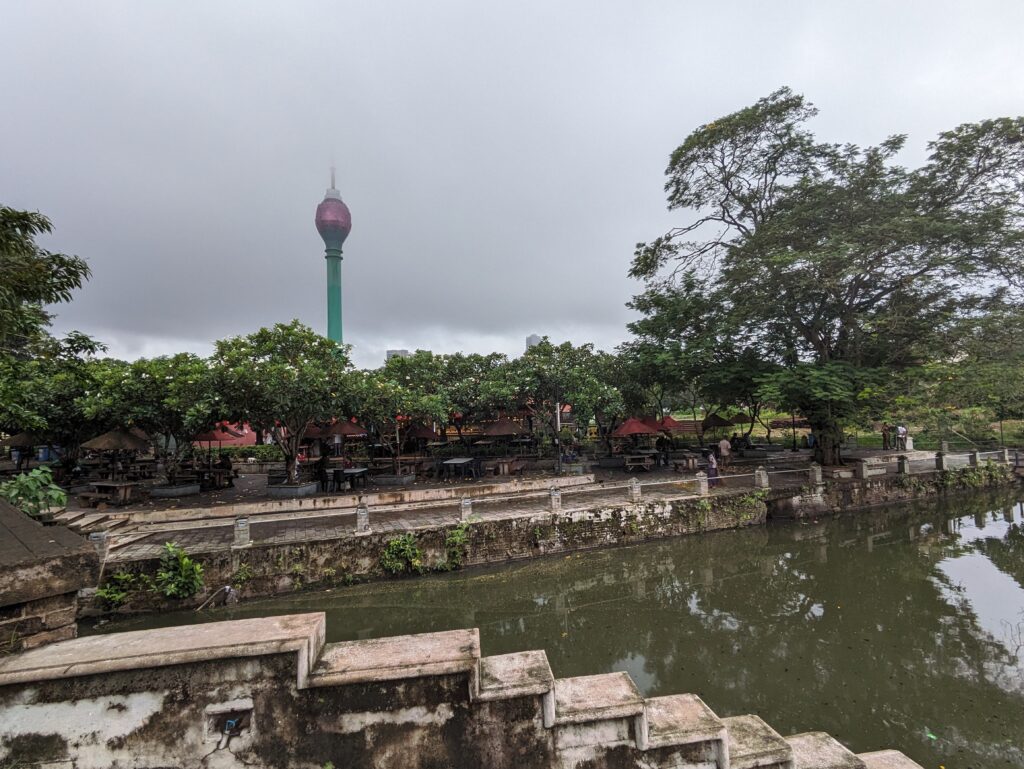
An offshoot of Beira Lake where there used to be a floating market. Maali’s corpse is tossed in somewhere right around here at the opening of the novel.
In the background of the lake you can see the tip of the Lotus Tower, tallest building in the city. Like so much else in the area, this is being built with Chinese financing. The Belt and Road Initiative has taken over a huge chunk of the city waterfront for a new naval base container port on a 99-year lease. Our guide was quite vocal that Sri Lanka will never get any of the land back. Chinese funding is also putting up the elevated highway from the airport to the city which is a massive eyesore along the old waterfront. China is also building the highway out to Kandy. Sri Lanka needs the infrastructure development, but questions about “debt trap diplomacy” remain. And, the city will come to regret destroying the scenic port. One of the great assets Colombo and Sri Lanka in general has is that as a result of the war, quick and dirty tourism development in the 80s and 90s was less of a thing, but projects are moving fast now.
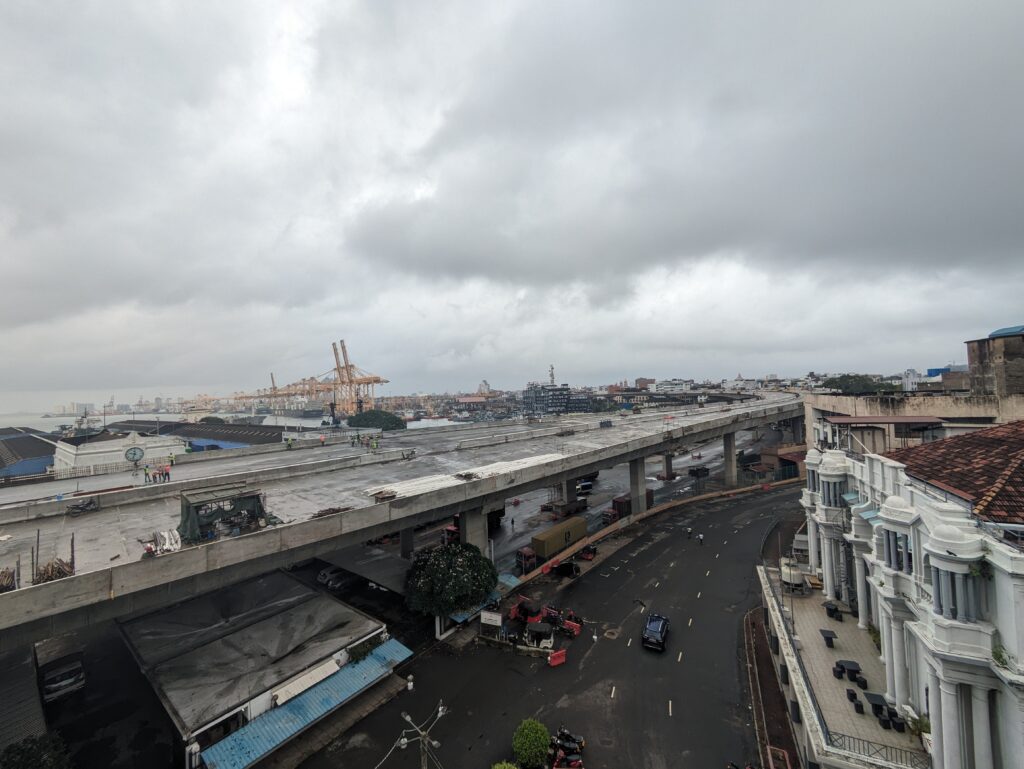
View of what remains of the old port from the Grand Oriental Hotel (the other, lesser, colonial pile in town) interrupted by an elevated highway going up between the water and scenic old buildings.
Maybe the highlight of the tour was Number 11. We arrived a few minutes after the tour started, but were allowed to join in. Number 11 is tucked into a cul-de-sac over near the university. It started as a single house on an alley, but grew to absorb the neighboring houses and even the alley itself. It is the home of the great Sri Lankan architect, Geoffrey Bawa, which has been maintained pretty much in its original start. Rain was pouring down outside by this point, but it was pouring down inside as well. Small light wells, and enclosed gardens are part of this home, office, studio that has little clear division between indoor and outdoor. The house displays Bawa’s collection of artwork, furniture, textiles, and ephemera. You can stay there if you like. Sign up now! One year or so waiting list.
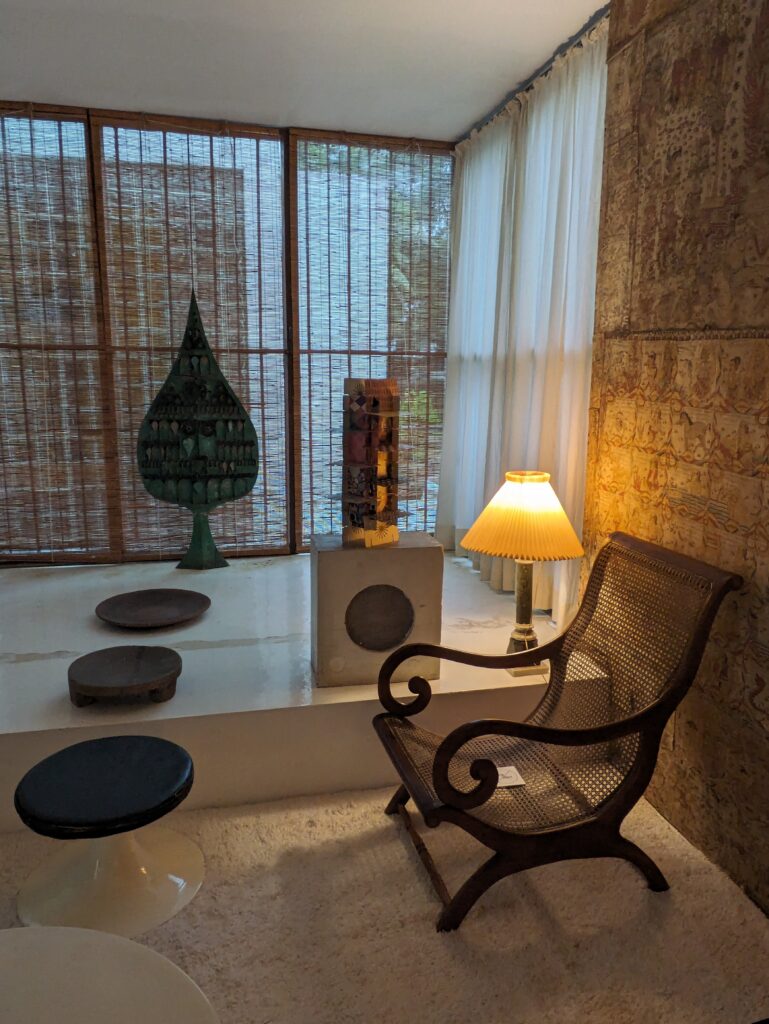
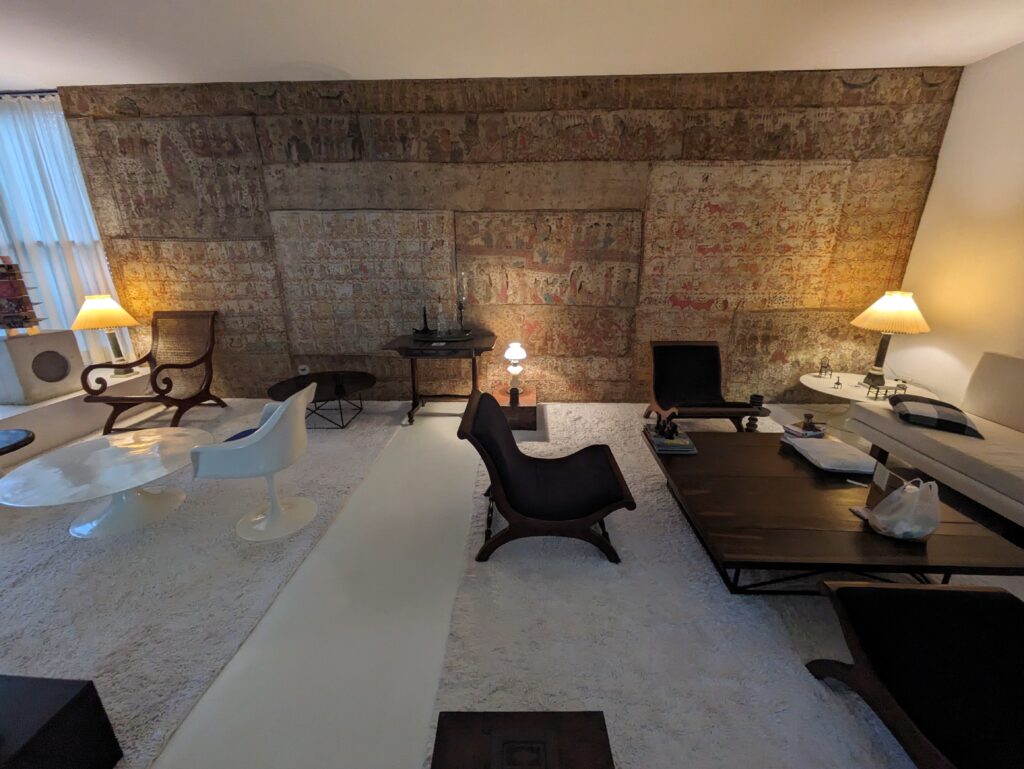
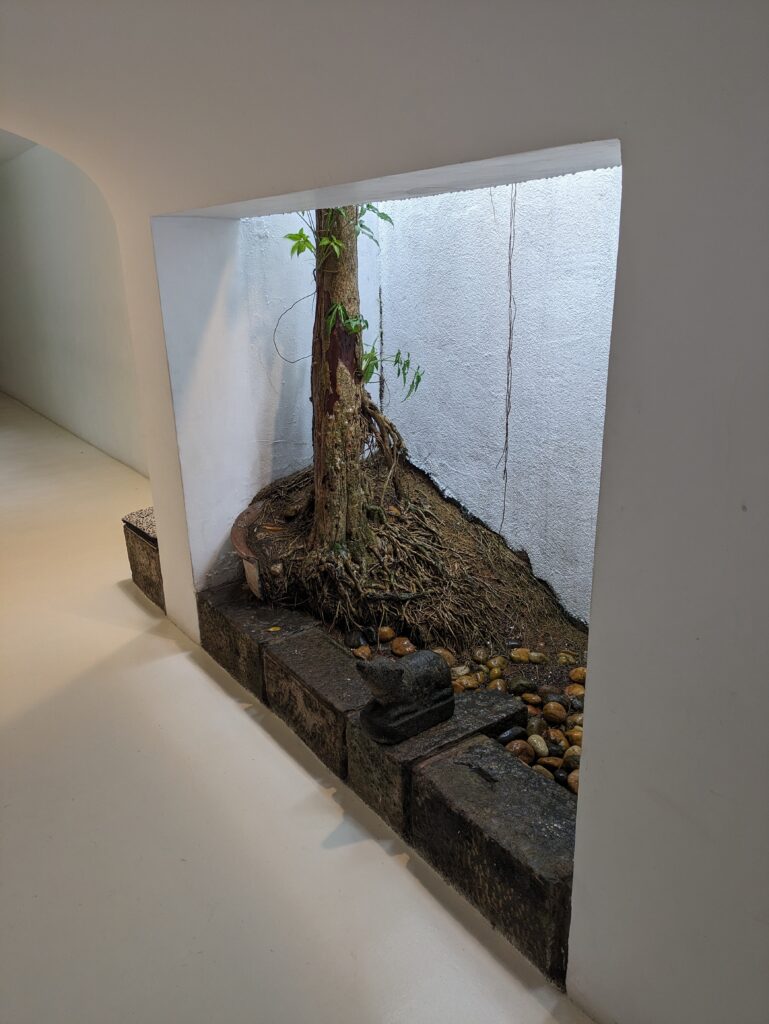
Inside Number 11.
On the last day, we took the train from Colombo, up and up into the hills to the highlands of Kandy. But first we had to pass over the plain outside the city. It was completely flooded after the recent rains. It was really terrible for anyone living on the outskirts of the city: streets, shops, houses, everything flooded. Even the tracks.
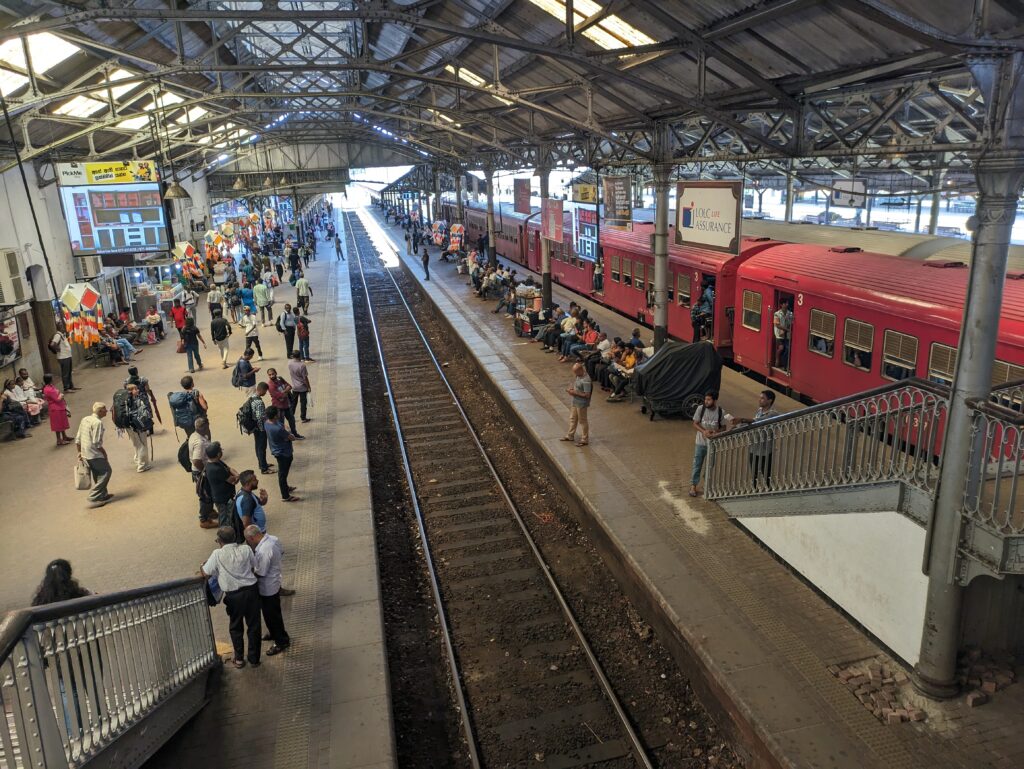
Colombo Station. The staff at the tourist and ticketing desk did a very good job of implanting an idea in Et-chan’s mind for later…
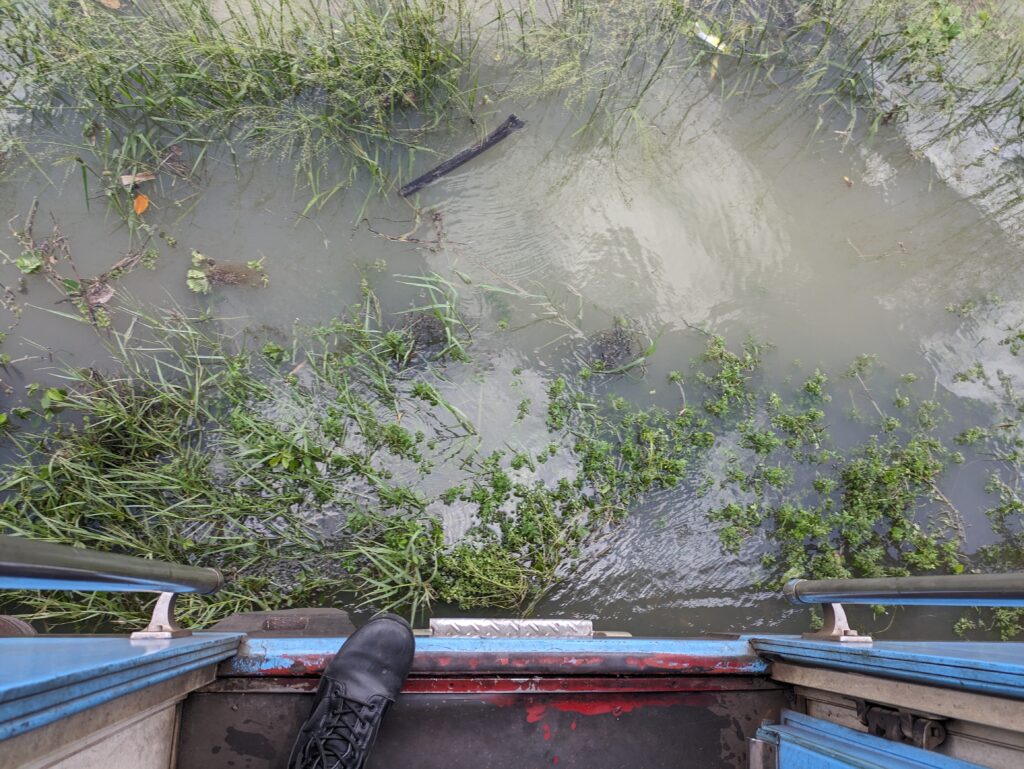
Looking down at the “tracks” from the train outside Colombo. Next stop, Kandy!
